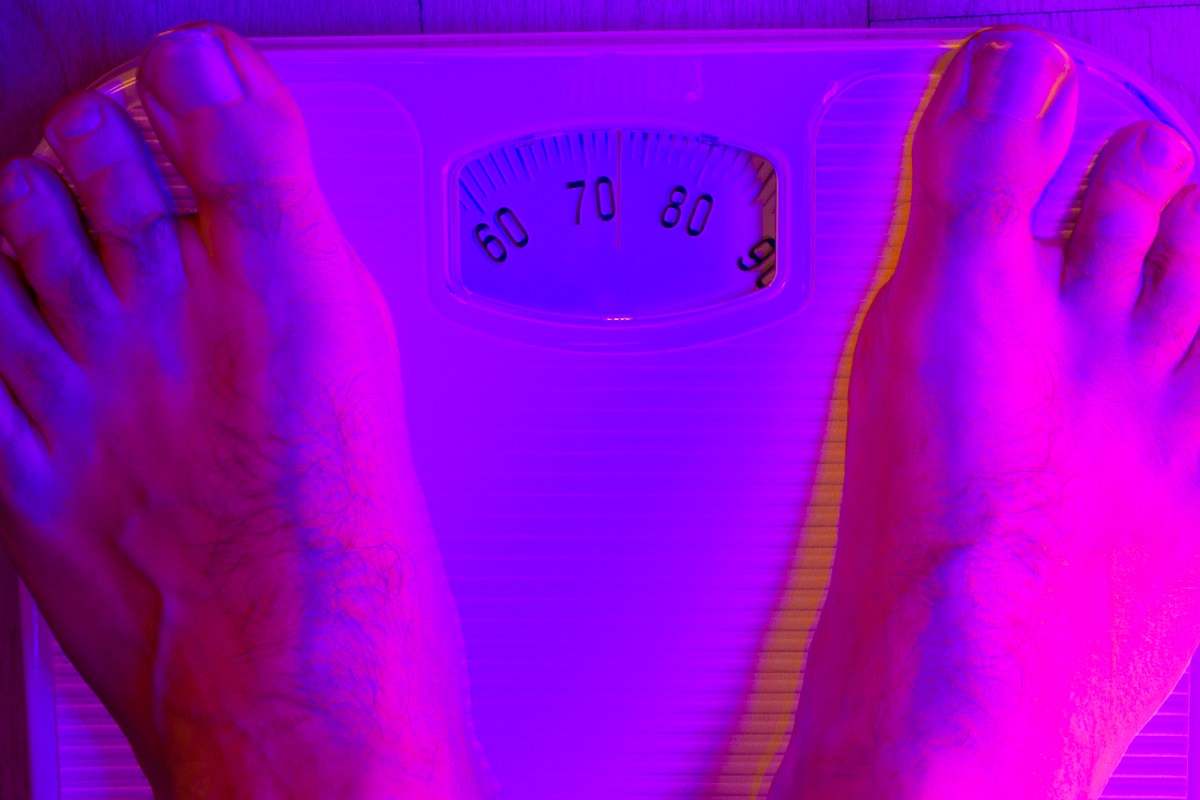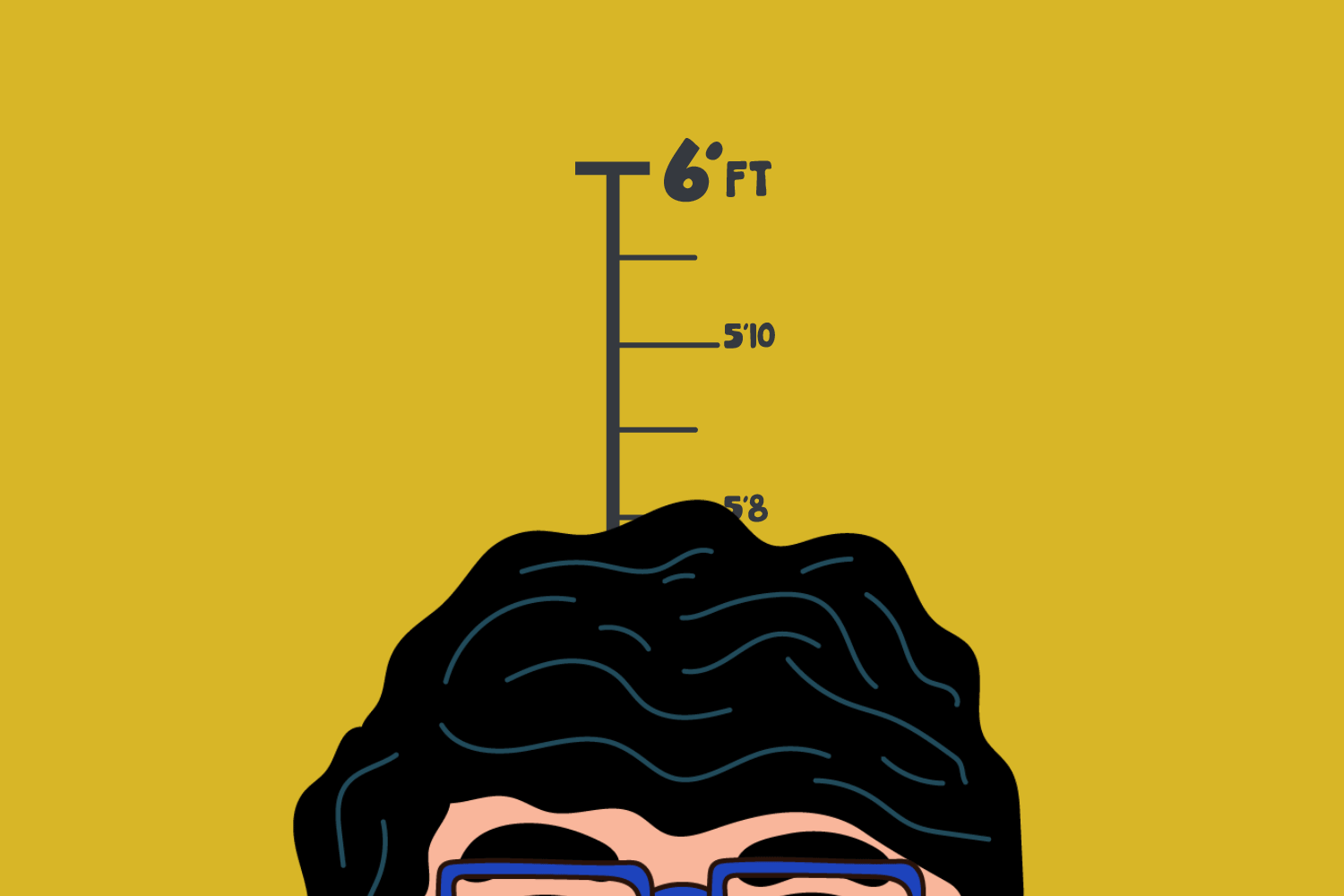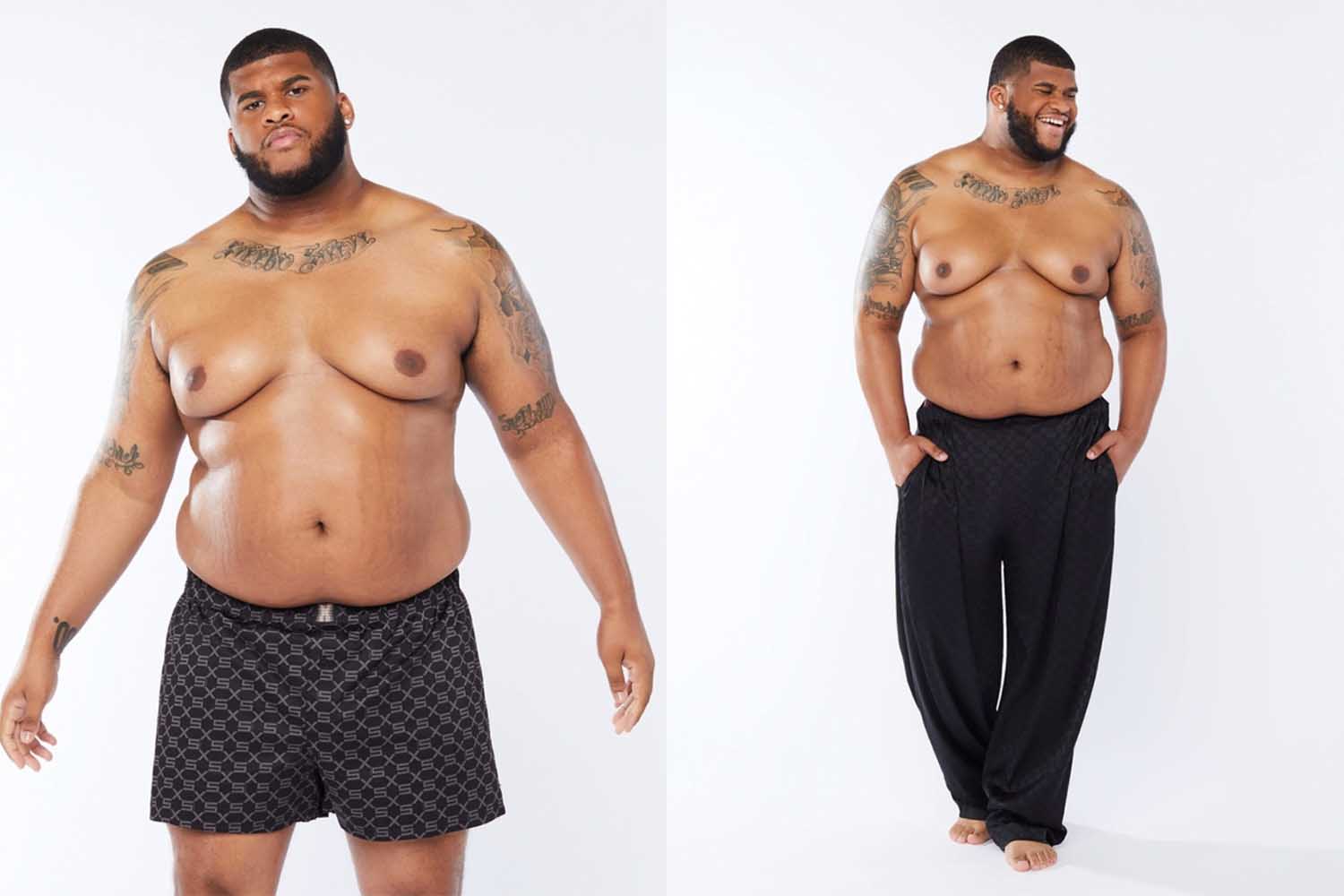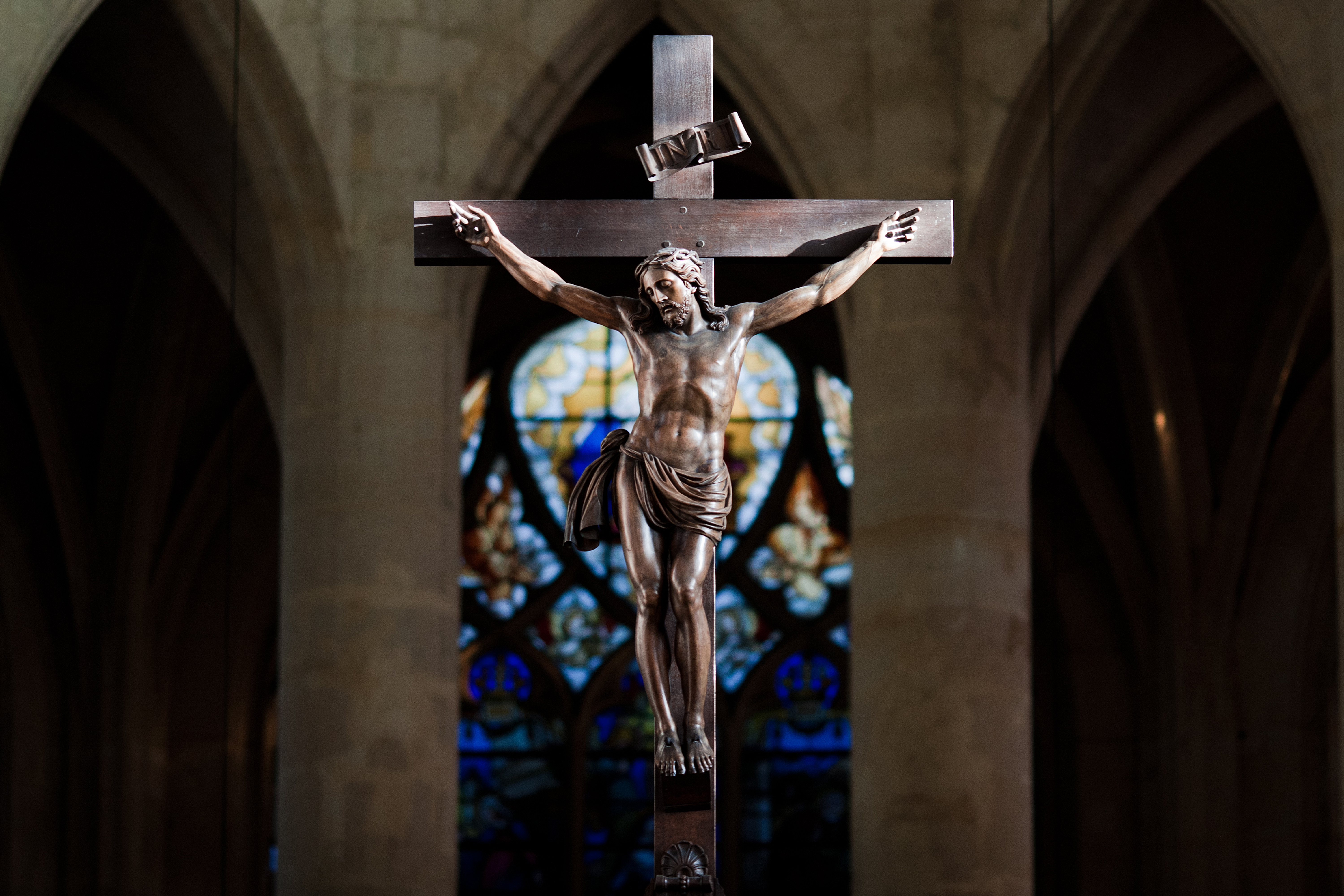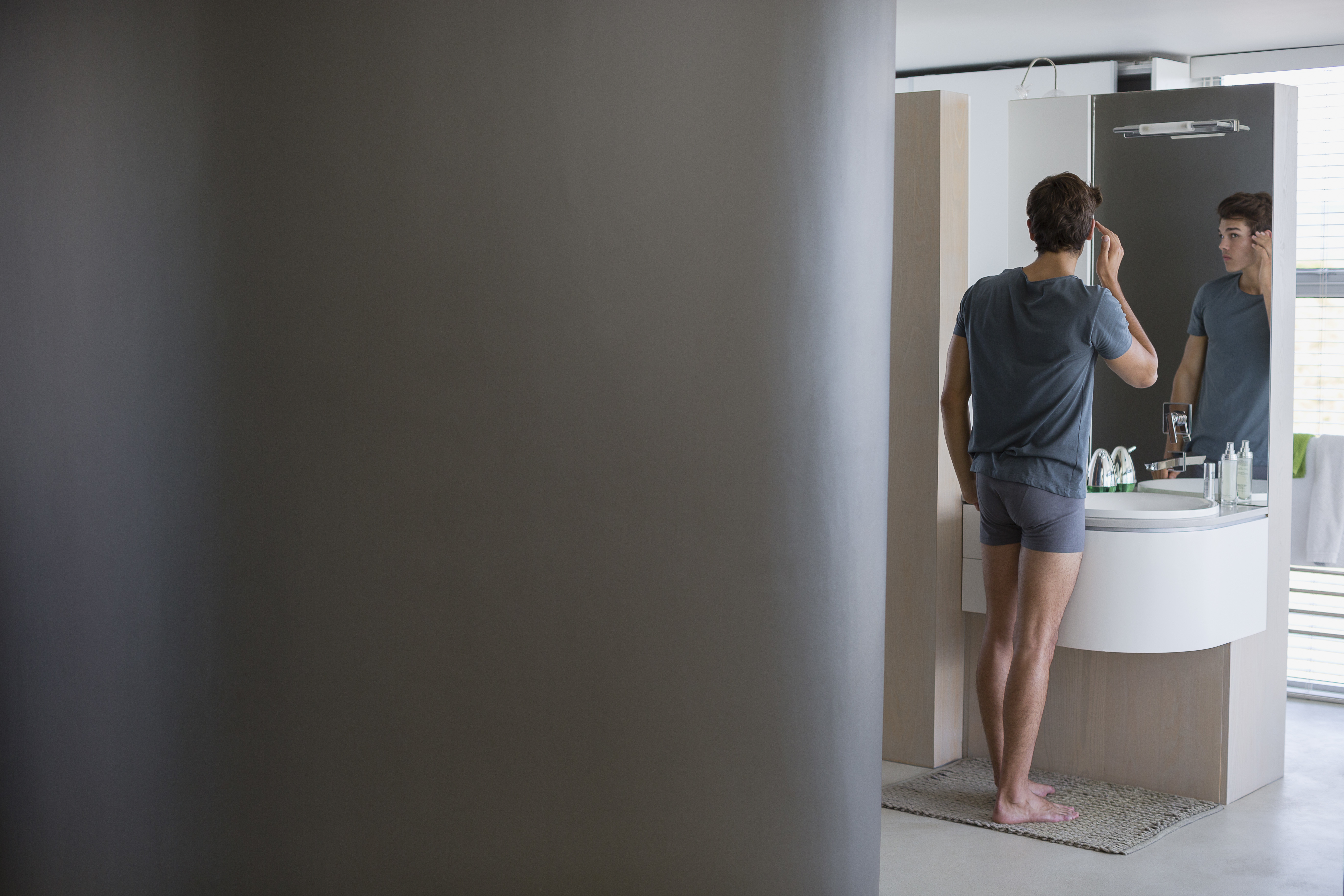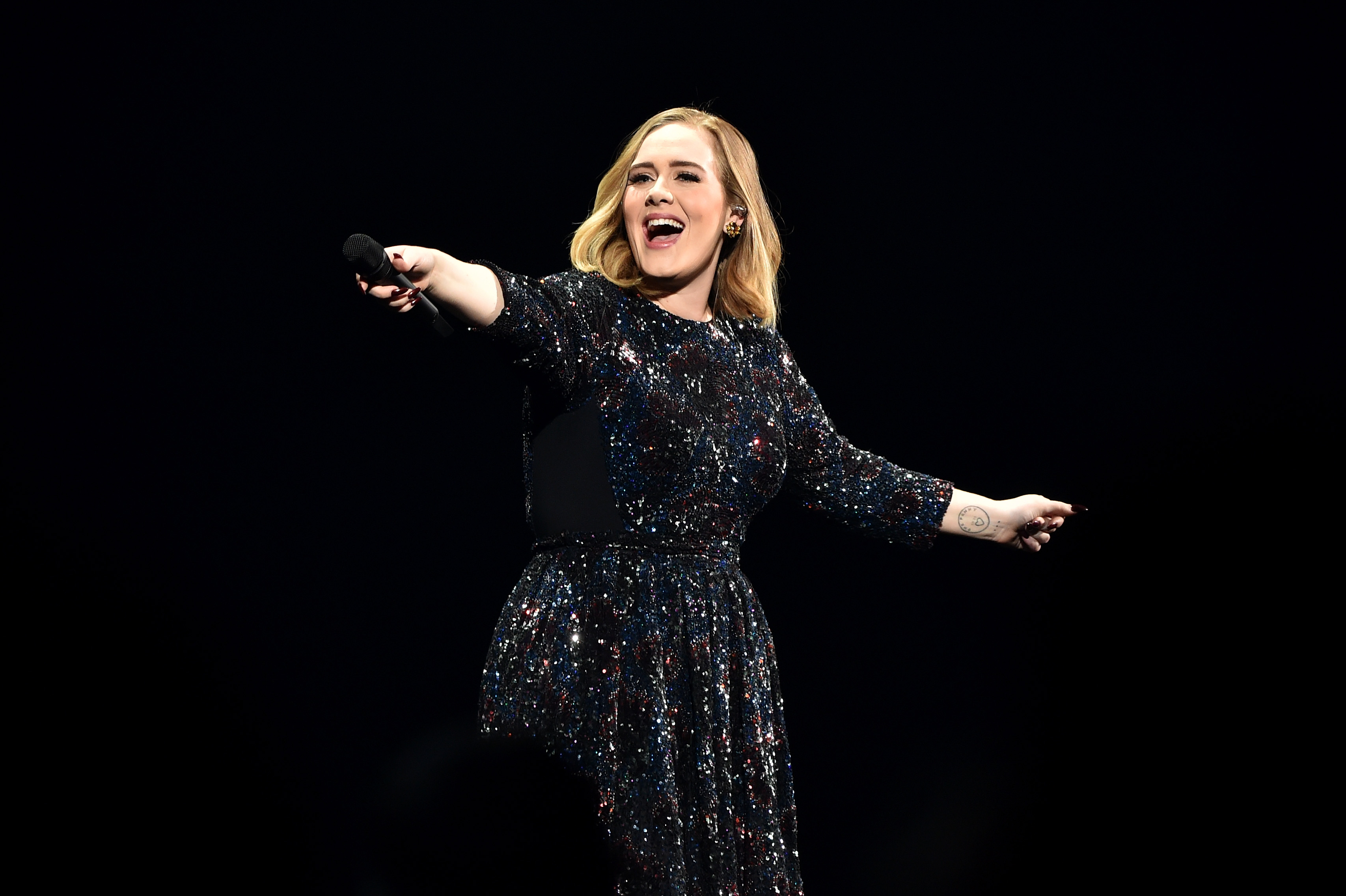In a room decorated with butterflies and inspirational quotes from female celebrities, a doctor hands a patient information about his recent eating disorder diagnosis. Using female pronouns, the pamphlet explains how the patient’s menstrual cycle will resume with recovery. Even for James L. Downs, “a gay yoga teacher who is in touch with his inner goddess,” this feels alienating. “I can only wonder how out of place a gym bro with an eating disorder might have felt in such a setting,” he tells InsideHook.
But Downs, a British mental health campaigner and “expert by experience” in eating disorders, was lucky. When 35-year-old Jason Wood finally sought treatment for orthorexia nervosa after struggling with disordered eating for two decades, his doctor simply suggested Wood go home and Google it. “My primary care physician didn’t provide me with a list of resources, he basically just told me to go online and look,” he says. “It was difficult to find a therapist and nutritionist to match my needs as a male. I found the process of finding help to be extremely difficult.”
This probably wouldn’t happen if Wood had been diagnosed with a different life-threatening condition. “Imagine getting a cancer diagnosis and your doctor telling you to go look it up on the internet and see if you can find where to go next,” says Paula Quatromoni, D.Sc., Department Chair of Health Sciences and a tenured associate professor of Nutrition and Epidemiology at Boston University. “Can you even imagine that?”
Unfortunately, for many men struggling with eating disorders, experiences like Wood’s and Downs’ are far from unusual. While society is gradually starting to acknowledge eating disorders in men, such instances are still largely treated as an exception, a footnote in the broader eating disorder narrative that remains dominated by a cast of young, thin, white women. We know that “men get eating disorders, too,” but only because that haphazard acknowledgement is often thrown into discussions of eating disorders as an obligatory aside. By and large, our cultural understanding of eating disorders remains overwhelmingly female-centric.
“For a long time, these have been seen as diseases of Western cultures and thin, white, privileged women seeking perfectionism and the thin ideal,” says Quatromoni.
It’s a stereotype we just can’t seem to drop, a double-edged sword that prevents men struggling with eating disorders from seeking treatment, and medical professionals from adequately giving it. This coding of eating disorders as a “women’s issue” isn’t just reflected in society and media, but in the medical community as well, where female-centric eating disorder stereotypes have left many healthcare providers ill-equipped to treat or even diagnose eating disorders in male patients.
“Most assessment tools for eating disorders use language that is geared towards women. Most eating disorders research is based on female samples,” says Dr. Jason Nagata, Assistant Professor of Pediatrics at the University of California, San Francisco. “Loss of menstrual periods used to be required for the diagnosis of anorexia nervosa, so many men were missed.”
This gendered stigma also makes it harder for men to recognize their own eating disorders, let alone seek help for them. This only reinforces data that suggests eating disorders primarily affect women, encouraging the medical community to prioritize female-centric research and diagnostic criteria. In short, it’s a vicious cycle, and it’s putting lives at risk.
“People die from eating disorders,” says Quatromoni. “Your heart stops,” and it doesn’t matter whether that heart is in a male body or a female one. “Nobody is immune, no matter your age, your gender, your ethnicity, your body shape and size,” says Quatromoni. “Eating disorders do not discriminate.”
How eating disorders became “a women’s issue”
“Some of the earliest reports of eating disorders dating to the 17th century included examples of men,” says Dr. Nagata. “However, eating disorders in men overall have historically been overlooked and under-recognized.”
While men may have been part of the picture in the proto-eating disorder research of the 1600s, much of the cultural understanding of eating disorders as we know them today can be traced back to the death of Karen Carpenter in 1983. One of the first high-profile celebrities known to publicly battle an eating disorder, Carpenter’s death from heart failure related to anorexia at the age of 32 brought newfound visibility and awareness to what was then a little-known disease. Carpenter, a thin, young, white woman whose eating disorder began with dieting in her teens, inevitably became the model for the many subsequent media depictions of disordered eating that sprung up in the years following her death, from made-for-TV movies to tasteless tabloids chronicling real or speculated eating disorders among the thin women of Hollywood.
Even today, eating disorder narratives featuring, let alone centering, male eating disorder patients are few and far between. The 2017 Netflix film To the Bone, in which Lily Collins’ character befriends a male patient (the only one) at an in-patient treatment facility, is one notable example. Even then, however, the male patient is merely a supporting character, starring alongside the obligatory white, female lead.
Such representation, or lack thereof, both reflects and reinforces the gendered conception of eating disorders, something author Molly Fennig, Eating Disorder Clinical Research Coordinator at the University of Minnesota, hopes to combat with her new novel, Starvation.
Fennig says she was inspired to write the novel, which focuses on a young man with an eating disorder, after first encountering statistics about the prevalence of eating disorders in men during a clinical psychology course in college. “I was floored, having never heard of men having eating disorders,” she says. “Growing up, I learned a lot from books, especially about mental and physical disorders and different ways of viewing the world. I wanted future teens to be exposed to male eating disorders so they could be better informed, either for themselves or those around them.”
Men can have body-image issues too
But a lack of media representation isn’t the only thing preventing us from acknowledging male eating disorders in a meaningful way. Implicit in our (mis)understanding of eating disorders as a women’s issue is yet another gendered misconception: men don’t struggle with body image.
“I think the biggest misconception is that men don’t have social pressure to look and act a certain way. We always hear about the pressure put on women to be thin and look a certain way, but we often overlook the pressure placed on men,” says Wood, who developed orthorexia, an eating disorder characterized by an obsession with consuming only “healthy” foods, after failing to achieve the muscular frame he saw as the masculine ideal.
“I wanted to be muscular because I thought that is how men are supposed to look,” says Wood. “When I pushed my body to gain muscle and didn’t see the results, I felt like a failure. American society idolizes men with big muscles and macho mentalities. I felt like I had neither.”
Indeed, another misconception that often leaves men out of eating disorder conversations — and diagnostic criteria — is the gendered notion that most eating disorders are driven by the pursuit of thinness as the feminine beauty ideal. While some men with eating disorders may be pursuing thinness, many may actually be looking to bulk up, resulting in behaviors and symptoms that often aren’t captured by current diagnostic criteria.
“Research into eating disorders in men show that for many, a ‘drive to muscularity’ is a key component in the development and maintenance of problematic eating and exercise behaviours,” says Downs, adding that those who do lose weight due to disordered eating may even “feel emasculated, physically weaker and further away from these ideals of bodily strength and sculpted muscular beauty that we are told equate to having value as a man.”
That’s what happened to Wood, whose perceived failure to achieve the muscular, masculine ideal pushed him to fixate on healthy eating as a form of compensation. “As a man, I wanted to be viewed as strong in both the emotional and physical sense,” he says. “I tried constantly to put on muscle and not be a wimpy twig, but my diet didn’t allow that to happen. It made me feel insecure about my masculinity.” Unable to reshape himself into the masculine ideal, Wood committed to defining his body in a different way: “I decided I would be the health nut, the skinny guy — that would be my identity.”
But you don’t have to have body-image issues to have an eating disorder
While some men may very well develop eating disorders in the pursuit of an aesthetic ideal — whatever that ideal may be — eating disorders in other men may have their origins in the more stereotypically masculine pursuit of health and athleticism.
Quatromoni, whose team recently published a groundbreaking paper on eating disorders in male athletes, recalls the case of David, a college track star whose eating disorder earned him praise from coaches and teammates: “He was being congratulated for dropping that ‘Freshman 15′ — for getting more fit and for getting more cut and for dropping his body fat and being a dedicated athlete who was committed to clean eating.” Meanwhile, a female college athlete who presented with similar behaviors and symptoms was quickly dropped from the team and forced into eating disorder treatment.
“They were doing the exact same thing, but with David, it flew completely under the radar,” says Quatromoni. Because eating disorders have so long been presented as diseases that predominantly affect women, we’re quick to identify disordered eating behaviors in women. Meanwhile, those same behaviors in men often go unnoticed, or even praised.
As extreme diets like TB-12 and intermittent fasting are being peddled to men by prominent male figures like Tom Brady and Jack Dorsey, it’s becoming even more difficult to recognize disordered eating behaviors in men who appear to simply be adhering to masculine health ideals.
“My eating disorder was difficult to recognize because I wasn’t trying to lose weight for body image issues. I didn’t even think I was that sick, even after I received my diagnosis,” says Wood. “I wasn’t starving myself, I wasn’t purging, I was simply trying to eat healthy. I was literally killing myself to try to live longer.”
Moreover, an understanding of eating disorders as exclusively driven by the pursuit of aesthetic or health ideals ignores the many other factors that can inform disordered eating in people of all genders, as well as the wide variety of ways in which disordered eating can manifest. A health- or thin-centric view of eating disorders completely ignores the existence of binge eating disorder — one of the most common eating disorders and the only one that occurs in men at nearly the same frequency in which it does in women, according to available data. Eating disorders of all kinds can also stem from a variety of factors completely unrelated to gender or body image, such as trauma, abuse, neglect or food insecurity.
“These truly are not female gendered conditions at all. You’re vulnerable for all of these reasons regardless of your sex or your gender,” says Quatromoni. “These are universal themes that just play out in different ways. No subgroup is immune from this at all.”
Lethal masculinity
Regardless of who you are or the factors that may have contributed to your eating disorder, a pervasive, gendered stigma makes it harder for men to seek help, or even to acknowledge their eating as disordered.
“Our stereotypical view of eating problems as happening to skinny, white, middle-class teenage girls is so exclusive and does a disservice to most people with eating disorders who don’t fit this image, not just men,” says Downs. “But I think that for men, the focus on feminized presentations of eating disorders can make us struggle to even think that our problems might be a diagnosable eating disorder in the first place. So many men may not even be aware that eating disorders can happen to men, too, and this means they may end up in treatment later than they could have, having suffered more along the way.”
Indeed, says Dr. Nagata, “many men experience delays in diagnosis and treatment,” either because they weren’t aware they had a problem, were too ashamed to get help or because healthcare providers were not equipped to recognize or treat a male eating disorder patient. And even for those who do seek and receive professional treatment, the gendered stigma surrounding eating disorders still leaves many men struggling with feelings of shame and emasculation.
“The males in our study talked about how lonely and isolating it was to be a man with an eating disorder, first and foremost because eating disorders are perceived as a women’s issue, so you’re [perceived as] less masculine if you are a guy struggling,” says Quatromoni. “Most of the men we spoke with recently are suffering in silence because if they admit [to having an eating disorder] they’re humiliated or laughed at or labeled or emasculated.”
“I would say almost every boy or man I have treated with an eating disorder has brought up the feeling of shame they have as a male with an eating disorder, and the fear that people will question their masculinity, sexuality or both,” says Roberto Olivardia, Ph.D., a clinical psychologist, lecturer at Harvard Medical School and co-author of The Adonis Complex: How to Identify, Treat and Prevent Body Obsession in Men and Boys. “The stigma leads to less identification amongst the men who struggle with the condition, as well as less diagnosis from health care professionals.”
The narrative of male eating disorders, to the extent that one exists at all, is sad, cyclical and full of shame: Gendered stereotypes lead fewer men to seek treatment, thus reinforcing those gendered stereotypes that prevent men from getting help and leave them suffering in silence.
Meanwhile, as is often true of mental illness in general among men, many lack the social network or even the language to address their struggles with trusted friends and peers. “Men don’t talk about eating disorders or mental health,” says Wood. “When I’m talking to my buddies, it’s about a football game, NASCAR race or solving the world’s problems. We don’t spend time sharing our emotions or struggles over a beer. That’s the mindset I held for so long. I still find it difficult to be completely open with my guy friends about my eating disorder.”
This lack of communication, adds Downs, “can make it especially alienating to be a man with an eating disorder, on top of the secrecy and isolation that can go hand in hand with having an eating disorder anyway.”
That’s precisely why activists like Downs and Wood have made a point of coming forward with their stories, and attempting to establish safe spaces for other men to do the same. At the beginning of this year, Wood started Orthorexia Bites, an online platform offering information, resources and community for those struggling with the often under-represented eating disorder.
“I launched Orthorexia Bites to not just raise awareness for orthorexia, but to add another voice to the eating disorder world,” says Wood. “We need more voices out there sharing their stories, encouraging other males to get help. What I fear is that many men with eating disorders go unrecognized. They lie to themselves and hide it from the world. Perhaps if they hear first-hand experiences from other males, it will open their eyes to the fact they don’t have to live like this.”
If you or someone you know is dealing with an eating disorder, the National Eating Disorders Association helpline is 1-800-931-2237; for 24/7 crisis support, text “NEDA” to 741741.
Whether you’re looking to get into shape, or just get out of a funk, The Charge has got you covered. Sign up for our new wellness newsletter today.
